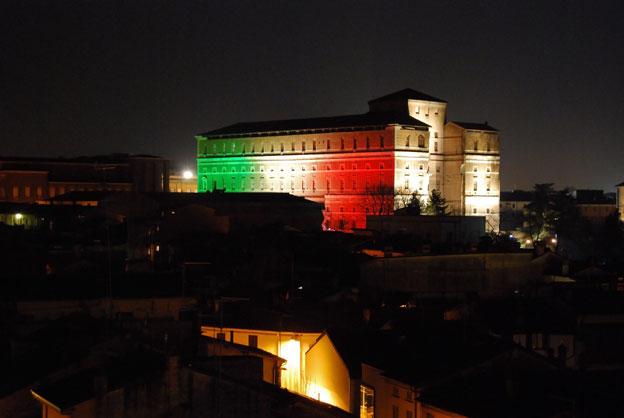One of the appealing things about Italy is that each city, town or village has impressive architecture often of historical interest, whether that is a palace, castle, town hall, church or private residence. What’s more, many such buildings house collections of interest, whether they act as galleries or museums. Piacenza’s Palazzo Farnese is an example of just such a place that is fascinating in numerous ways. A vast building on the banks of the River Po, the palace was built in the 16th century for the Farnese family.
The palace is home to the civic museum and contains medieval frescoes, sculptures, ceramics, weaponry, glassware and paintings. Among the star pieces on show is Sandro Botticelli’s ‘Madonna Adoring Child with the Young St. John’, which dates to between 1483 and 1487. The painting is circular, indicating that it was not intended to be displayed in a church but rather in someone’s home, and the subject suggests it was commissioned as a present from a husband to wife to celebrate the birth of a child. Painted in tempera on panel, the painting shows the Virgin bowing before Jesus in an act of devotion. Jesus is depicted lying on the ground in keeping with the contemporary style of painting influenced by the Dutch that chose to portray the Holy Family in all their vulnerable humanity. An allegorical work, the baby Jesus lies on a purple cloth – the choice of purple representing death foreshadows the crucifixion. Likewise, the prickly rosebushes that act as a backdrop resonate of Christ’s crown of thorns.
Also of particular interest is the collection of carriages on the ground floor of the building. The coaches date to the 1600s and include carriages for children, the nobility, funerals and firemen from all over the world.
However, the most bizarre piece in Palazzo Farnese is the Fegato Etrusco (Etruscan Liver), which is a small engraved bronze shaped like a sheep’s liver with three protrusions on the surface. Although the unusual item is not aesthetically pleasing, it is important in the museum because of what it reveals about Etruscan religion. The Etruscan Liver dates to between the end of the 2nd century BC and early 1st century BC. Discovered in the province in the late 19th century, it is thought to have been used by the Etruscans ancient diviners, or haruspices, for hepatoscopy during religious rituals. The seers or priests sacrificed a sheep and then compared its liver to the bronze to decide if there were good or bad times ahead. The outer rim of the bronze is divided into 16 sections, reflecting Etruscan astrological signs, leading experts to conclude the liver is a model of the cosmos. The bronze’s surface is subdivided further with the inscriptions of the names of Etruscan deities. By analysing the organ of the sacrificial animal to the layout on the bronze liver, the ancients would interpret it as a good or bad omen, in the same way a haruspex famously warned Julius Caesar to beware the Ides of March.
The Palazzo Farnese is open Tuesday to Thursday from 9am to 1pm, Friday and Saturday 9am to 1pm and 3pm to 6pm, and Sunday 9.30am to 1pm and 3pm to 6pm. Admission costs €6.
Where: Palazzo Farnese, 29 Piazza Cittadella, 29121 Piacenza
Website: http://www.palazzofarnese.piacenza.it/








